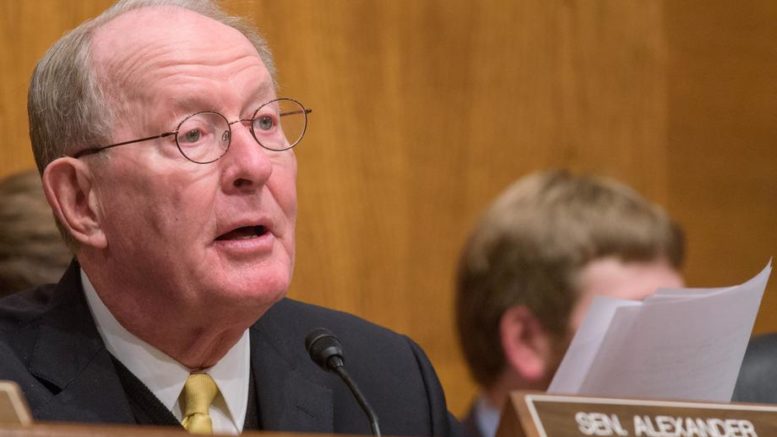The federal student loan cohort default rate, which determines if a college is eligible to receive federal student aid, is a “poor instrument of accountability,” since it doesn’t include the one-third of borrowers who are not yet in default but don’t make payments on time, according to the chairman of the Senate education committee.
During a Senate Health, Education, Labor and Pensions (HELP) Committee hearing Wednesday on improving accountability in higher education, Sen. Lamar Alexander (R-Tennessee) questioned whether the 29-year-old measure is effective in weeding out poorly performing colleges.
Under the measure, which the U.S. Education Department publicly discloses annually, colleges with a default rate of 30 percent or more over three consecutive years or more than 40 percent in one year are ineligible to participate in federal student aid programs. But over the last decade, only 20 schools lost eligibility under the default rate, Alexander said.
The hearing is part of a series that the committee is holding this spring as it looks to reauthorize the Higher Education Act, which governs most federal student aid programs.
Program-level data
The senator also took aim at the federal gainful employment rule, which compares students’ college debt to how much they earn. Alexander said it’s a confusing and ineffective measure and doesn’t factor for students who take out loans but do not complete their degrees.
Instead, Alexander reiterated his proposal for a new measure of accountability that examines whether students are actually repaying their loans. The proposal is similar to the GE rule, Alexander said, but it would apply to every program at every college – public, private and for-profit – and would include students who took out loans but dropped out before graduating.
“For some programs, this new measure should provide colleges with an incentive to lower tuition and help their students stay in school to finish their degrees and find a job so they can repay their loans,” Alexander said.
Accreditor’s POV
Belle Wheelan, president of the Southern Association of Colleges and Schools Commission on Colleges (SACSCOC), one of seven regional accrediting agencies in the country, cautioned against imposing so-called “bright lines” for institutions that would result in the loss of accreditation and the ability to participate in federal student aid programs if institutions do not meet certain outcomes.
“I understand why some would be interested in such an idea,” she said at the hearing. “It seems simple, takes away most subjectivity, and would presumably remove bad actors, thereby protecting students. Unfortunately, it’s simply not that simple.”
She gave the example of using graduation rates as a metric. Last year, the Council of Regional Accrediting Commission issued a one-year review of its graduation rate project, which examined two-year and four-year institutions with a federal IPEDS graduation rate below 25 percent, or half the national average. The study found that at 75 percent of these “low-grad” institutions, most of students were not reflected in the federal data because they didn’t enroll as first-time, full-time students, Wheelan said.
“An inaccurate representation of an institution’s student body will clearly have a significant impact on the institution’s graduation rate and outcomes,” she said.
SACSCOC examined the impact in its region of using data from the National Student Clearinghouse, which follows many more students and uses a longer period of time for when students graduate, which is important regarding part-time and non-traditional students. Not surprisingly, the graduation rates of the community colleges examined doubled from 21 percent to 40 percent, Wheelan said.
“The point here is not just that federal graduation rates are often incomplete, but also the fact that bright-line graduation rates would invariably fail to capture the many different ways in which graduation rates can be approached,” she said.
New standards
But Wheelan emphasized that although she opposes federal bright lines for accountability, she strongly believes accreditors must hold institutions accountable for student outcomes, such as graduation rates. That is the direction all regional accreditors, including SACSCOC, are headed, she said.
As part of its reviews, SACSCOC examines institutional outcome metrics, including enrollment, completion rates, cohort default rates, retention/withdrawal rates, transfer-out rates, loan repayment rates and median earnings. The reviews are sometimes done at the institutional level and at times drive down to the program level, depending on information provided by the institution, she said.
SACSCOC pays particular attention to graduation rates, though it recognizes that there is more than one way to define “graduation rate,” Wheelan said.
“Under our newly adopted standards, we require every institution to identify a key student completion indicator from the following completion metrics to serve as their baseline performance level,” she said.

